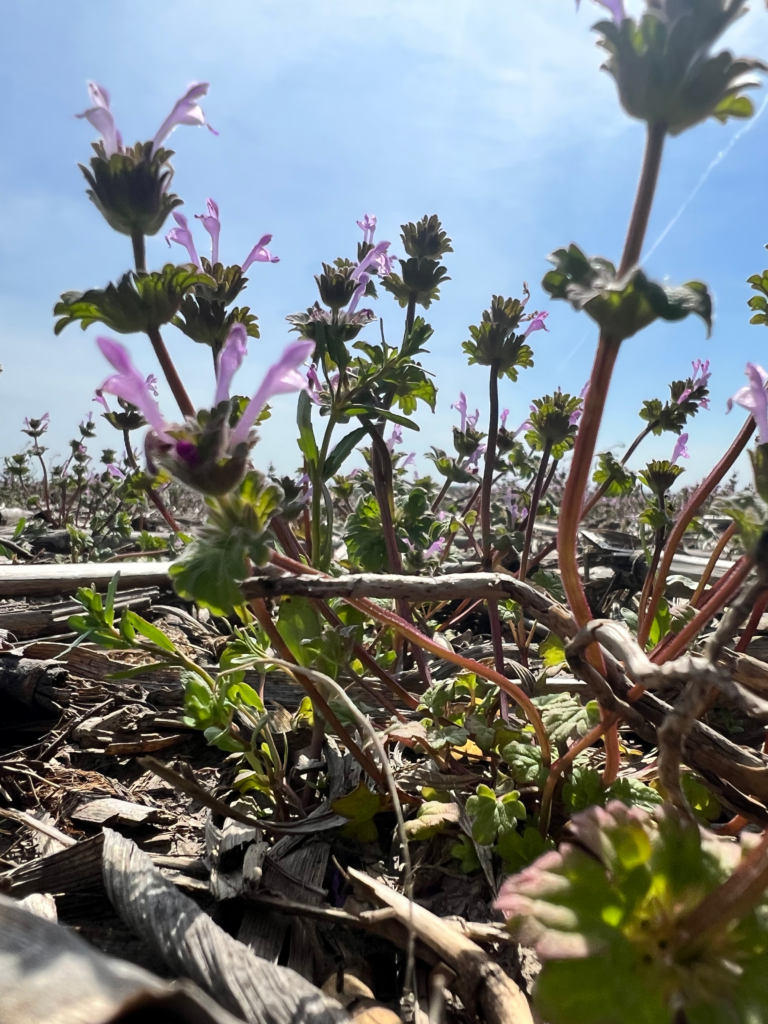A perfect storm of a mild winter, recent rain, and late spring cooler temperatures have hindered timely spring burndown herbicide applications. This led to conducive conditions for weeds, especially winter annual weeds that are thriving in fields. This situation can hinder drying and warming of the soil, which can lead to delayed planting and lower yields. The later we get into the season, the harder it is to control them when they reach later growth stages. Winter annual weeds can also cause issues with seeding depth as well as crop establishment in fields with high residue. Moreover, what else could go wrong?
The purple winter annuals that can be seen across no-till fields most likely is henbit, but another similar purple weed, that could be confused with henbit, is purple deadnettle. Both purple weeds can be very strong alternate hosts of soybean cyst nematode (SCN). In fact, the SCN reproduction on henbit and purple deadnettle in the greenhouse was found to be equal or exceed that of SCN -susceptible soybean. There have been other winter annual weeds such as field pennycress, shepherd’s-purse, small-flowered bittercress, and common chickweed that are also found to be alternate hosts to SCN, but they have been found to be moderate to weak hosts. There could be other weeds that have not been screened yet that could also be considered hosts of SCN.
If the soil temperature is above 50 F in the spring or during the fall, not only can winter annuals continue to grow, but SCN is active and reproducing on winter annual weed hosts. Research has also found the SCN cyst and egg production was more common in the fall than the spring, so this means that it has become very important to manage winter annuals in the fall. The trick would be to apply herbicides as soon as the combine leaves the field or as early as possible while conditions are still favorable for the development of SCN, but before they can produce eggs. Another recommendation would be to apply residual herbicides in soybean PRE or POST to reduce winter annual weeds from emerging in the summer to early fall. Also, apply residual herbicides in corn to reduce winter annuals growth in the growing season and early fall. Lastly, SCN juveniles can be found within henbit and purple deadnettle roots both during the fall and spring, but numbers are highest in the spring. Therefore, it is very has become even more important to remove winter weeds before planting.
You can learn more by going to Winter Annual Weeds and Soybean Cyst Nematode Management (purdue.edu).



 and then
and then